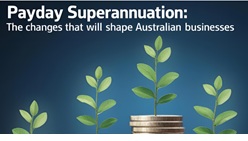Digital Opportunities for HR by Anders Sörman-Nilsson
My friend Anders Sörman-Nilsson, shares a brilliant article which I wanted to share with you.

While presenting at HR Tech Fest last year in Sydney, I asked the room “how many people wear an analogue watch?” About half the room raised their hands. I’m always baffled by this. We’re supposedly living in an era of digital disruption, an era where we have this precise digital information about what time it actually is, devices that geo-contextually update no matter what time zone we happen to be in. Yet as human beings we still insist on wearing old-school wearable tech devices. Why would we do such a thing?
My best bet is nostalgia. You know, the good old days before Amazon was just a rainforest on the other side of the world, and cloud was just a meteorological term that blocked the sun on cold winter mornings. There is a whole generation of workers who remember their first vinyl or the first cassette tape they ever got. There’s something enduring about that- something that’s tangible, something we can feel that also connects with our hearts, not just our digital minds.
But organisations around the world are facing a paradigm shift – moving away from the world of the physical, of the tangible, into a digital future of doing work where the user interface of work is massively being disrupted. Change is happening whether we like it or not. So how do we seamlessly weave the old and the new together while making sure that all of our #leavenobabyboomersbehind go on this journey into an increasingly digitised future?
Acting on the Digital Shift
Unless we as organisations can make the transition from the analogue physical world to the digitised virtualized future seamlessly, we’re running a serious risk. Sometimes it can be as simple as observing what’s going on around you as we can see from this example from my homeland of Sweden.
 In Sweden the micro entrepreneurs and the vendors of the Swedish version of The Big Issue, Situation Stockholm, found their sales were going down, down, and even further down. And they asked themselves, “Is it true that Swedes are anti-social b*stards without a heart?” or might it be that no one carries cash anymore? There was always a positive intent to support the micro entrepreneurs on the streets of Stockholm, but because they only took cash, and Sweden is the most cashless economy in the world, people just couldn’t transact and realise their positive intent.
In Sweden the micro entrepreneurs and the vendors of the Swedish version of The Big Issue, Situation Stockholm, found their sales were going down, down, and even further down. And they asked themselves, “Is it true that Swedes are anti-social b*stards without a heart?” or might it be that no one carries cash anymore? There was always a positive intent to support the micro entrepreneurs on the streets of Stockholm, but because they only took cash, and Sweden is the most cashless economy in the world, people just couldn’t transact and realise their positive intent.
They teamed up with a Swedish mobile EFTPOS provider – iZettle – that meant that all of a sudden, people could pay via credit card. Now credit cards aren’t a cutting-edge technology by any means, but it enabled the positive intent of people to support these micro entrepreneurs. Sales went up 59% in one month, all because they understood and acted on the shift that was going on around them. Read more about this story on Bloomberg.com
Digital Opportunities for HR
Our role as HR professionals must be to enable smarter decision making in real time. Beautifully designed interfaces, designed for collaboration and smarter decision making is key. Let me present one example here of how this could look for the future.
Let me introduce you to “Raj”. Raj is a fisherman. He’s in aquaculture in Kerala, India. For generations his family have been going out to sea and bringing back the catch of the day into one of 11 different harbours that were equidistant from his fishing waters, and then selling his goods into those markets. Sounds like a solid traditional business model, right? The professional development he would do at the end of a busy day at work would be sitting and mending the nets to make sure he wouldn’t lose any yield the next day.
Now he always had a choice between 11 different, equidistant harbours, but based on gut feel and getting some quick rupees in the harbour, he would usually choose the harbour that was closest to his loved ones. Makes rational and heart-based sense, right? Until one day he bought a Nokia 1100 because he realised that Bharti Airtel (an Indian telecoms company and a client of Thinque’s) had enabled coverage up to 25 kilometres away from his fishing waters. So all of a sudden he could call his mates in the 11 different harbours and see what the real time price, based on supply and demand, would be back in the harbour. All of a sudden he’d moved from not just being a fisherman, to also being a futures and commodities trader.
Do you think he started making different decisions about where he went to market? Absolutely. The economists in the quarterly Journal of Economics studied the mobilisation of Indian fisherman in the state of Kerala, and they found that the fisherman who mobilized increased net yields by 8%, and the price of the consumer fell away magically by 4% as a result of less wastage. Supply and demand meeting perfectly. Why? Because of a simple phone interface.
How Do We Sell the Idea Of Digital?
Change can be tiring, and that’s why selling the idea of change is often so hard. Consider the task of selling someone on the concept of why 2016 is going to be different: Paleo diets, cross-fitness training, gluten-free eating. How does that pan out 21 days later? Change can be extremely disruptive, but it can also be very, very hard, as you know as HR professionals, to sell.
Here are three ideas on selling the idea of technology disruption to business:
1. Target Early Adopters: The iPad
One of the best case studies of early adoption of technology is the launch of the iPad. Apple thought very, very carefully about how they were going to diffuse this new innovation. Now we still don’t really know what an iPad is at this point, but because Steve (Jobs) told us we really needed one, we all bought them. And now our organisations do as well. How did they do it? Apple focused on the innovators, the 2.5% who were likely to camp outside the Apple shop for days to buy it. They then focused on the early adopters in the design of this diffusion of innovation to ensure that those who wanted to read the blogging reviews before they bought it could, and maybe had placed an option to buy one with their mates who were in sleeping bags outside of the Apple store. We were all using them via WiFi in cool cafes making the earlier majority and even the late majority wanting to buy one as well and that’s where they’re starting to reach critical mass after they crossed the chasm of the critical 16%.
So, that’s where we’re heading in the future. How do you sell IT and technology inside your organisation? Do you design the rollout of your new interfaces like this? Have you identified who the innovators and early adopters are? And have you thought about psychologically how you’re going to win across the chasm – perhaps to the board or senior management?
2. Present Ideas Beautifully: Big Data in the Age of Cholera
Today, we are truly living by our digital digits, and a consumerised, beautiful interface is something we’re now expecting at work. How do you show your project progressing from point A to point B? If you give me an Excel spreadsheet, sorry that is not a beautiful interface. We tend to underestimate the impact of beautiful visual design but consider this (very early) example of using visual data to effect change.
Back in the 1850s, London physician John Snow (not to be confused with Game of Thrones Jon Snow), had a theory about cholera during the 1854 outbreak. Contrary to popular belief he claimed that cholera was a water-borne, not an airborne disease. Nobody, of course, would believe him. So he started gathering and visualising some data. As he started mapping data on a map of Soho he found that 656 deaths occurred in several houses. He then saw that there were several water pumps in that particular area that people collected their water from. He realised that one of them was contaminated, and by using big data visualisation was able to go to the authorities in Soho with a beautiful visual interface of this data and within days they had shut down the pump. So, ask yourself – do you present data as beautifully or as convincingly as John Snow did? Have you considered using data in more visualised fashions to convince people of the benefits of your new HR rollout? Because this is key for your success.
 Keynote speaker Anders Sorman-Nilsson presenting at HR Tech Fest 2015 in Sydney.
Keynote speaker Anders Sorman-Nilsson presenting at HR Tech Fest 2015 in Sydney.
3. Bring Back Some Heart- CISCO’s Valentines Message
When we’re dealing with nostalgia, we need to remember this is an affair of the heart. CISCO gives us an insight into how we might bring a little bit of the heart back into modern technology in order to convince not just rational minds, but also laggard hearts. (This video was of course conveniently launched for Valentine’s Day.)
Here’s a little visualisation activity to end on. Imagine it’s 2020 and you’re looking back at today, 2016. You realise that on your watch your company went belly-up. And the question is this: What were the trends that you totally missed? What were the signals you chose to ignore? And what were the decisions, you delayed and delayed which led to this demise?
And what change would you make today to prevent this from happening?



